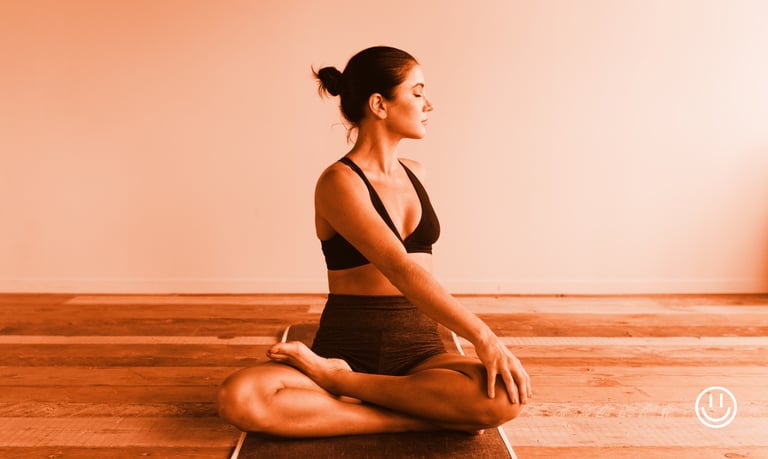The Perfect Balance: Exploring Yoga and Pilates
SPORT


This guide provides a comprehensive overview of yoga and Pilates, making it a valuable resource for anyone interested in exploring these beneficial practices.
The Perfect Balance: Exploring Yoga and Pilates
Introduction
Yoga and Pilates are two popular forms of exercise that promote physical fitness, mental clarity, and overall well-being. Though they share similarities, each discipline offers unique benefits and practices. In this blog post, we'll delve into the definitions of yoga and Pilates, explore their different types, provide guidelines on how to get started, discuss necessary precautions, and list alternative exercises. We'll also cover the essential gear you need and answer some frequently asked questions.
What is Yoga?
Yoga is an ancient practice that originated in India over 5,000 years ago. It encompasses physical postures (asanas), breathing techniques (pranayama), meditation, and ethical principles. The goal of yoga is to create harmony between the mind, body, and spirit.
Types of Yoga
1. Hatha Yoga: Focuses on physical postures and breathing exercises, making it ideal for beginners.
2. Vinyasa Yoga: Involves a dynamic flow of postures synchronized with breath, offering a more vigorous workout.
3. Ashtanga Yoga: A structured and physically demanding style with a specific sequence of postures.
4. Bikram Yoga: Performed in a heated room, this style involves a set sequence of 26 postures.
5. Iyengar Yoga: Emphasizes precise alignment and the use of props like blocks and straps.
6. Kundalini Yoga: Combines postures, breathing exercises, and meditation to awaken spiritual energy.
7. Yin Yoga: A slow-paced style that involves holding postures for extended periods to target deep connective tissues.
What is Pilates?
Pilates is a physical fitness system developed by Joseph Pilates in the early 20th century. It focuses on strengthening the core muscles, improving flexibility, and enhancing overall body awareness. Pilates exercises are typically performed on a mat or using specialized equipment like the Reformer.
Types of Pilates
1. Mat Pilates: Exercises performed on a mat using body weight for resistance.
2. Reformer Pilates: Uses a machine with springs, straps, and pulleys to create resistance.
3. Clinical Pilates: Tailored to individuals recovering from injuries, often guided by a physiotherapist.
4. Contemporary Pilates: Combines traditional Pilates with modern exercise science and variations.
How to Get Started
Yoga
1. Choose a Style: Select a yoga style that matches your fitness level and goals.
2. Find a Class: Join a local yoga studio, community center, or online class.
3. Learn the Basics: Start with foundational poses and gradually progress to more advanced postures.
4. Practice Regularly: Consistency is key to experiencing the benefits of yoga.
Pilates
1. Start with Mat Exercises: Begin with basic mat Pilates exercises to build core strength.
2. Join a Class: Enroll in a Pilates class to learn proper techniques and get personalized guidance.
3. Use Equipment: Once comfortable, explore exercises using Pilates equipment like the Reformer.
4. Focus on Form: Pay attention to form and alignment to maximize benefits and prevent injuries.
Precautions
1. Consult a Professional: Before starting yoga or Pilates, consult with a healthcare provider, especially if you have any pre-existing conditions.
2. Warm-Up: Always perform a warm-up to prepare your body for exercise.
3. Listen to Your Body: Avoid pushing yourself too hard and respect your body’s limits.
4. Proper Instruction: Ensure you are learning from qualified instructors to avoid incorrect techniques.
Alternatives to Yoga and Pilates
If yoga or Pilates aren't suitable for you, consider these alternatives:
1. Tai Chi: A low-impact exercise that involves slow, controlled movements and deep breathing.
2. Barre: Combines elements of ballet, Pilates, and yoga for a full-body workout.
3. Dance: Styles like Zumba or contemporary dance can provide similar benefits in a more dynamic format.
4. Strength Training: Focuses on building muscle strength and endurance using weights or resistance bands.
Essential Gear
1. Yoga Mat: Provides cushioning and support for yoga and mat Pilates exercises.
2. Comfortable Clothing: Wear breathable, stretchy clothing that allows freedom of movement.
3. Props: Blocks, straps, and bolsters can aid in achieving and maintaining postures.
4. Pilates Equipment: If practicing Reformer Pilates, invest in quality equipment or access a studio with the necessary gear.
FAQs
Q1: How often should I practice yoga or Pilates?
A1: Aim to practice 3-5 times a week for optimal results, allowing time for rest and recovery.
Q2: Can beginners do yoga and Pilates?
A2: Yes, both yoga and Pilates offer beginner-friendly classes and modifications for all levels.
Q3: Which is better for weight loss, yoga or Pilates?
A3: Both can aid in weight loss, but Pilates is typically more intense and focused on core strength, while yoga offers a holistic approach to fitness.
Q4: Do I need to be flexible to start yoga or Pilates?
A4: No, flexibility will improve with practice. Both disciplines welcome individuals of all flexibility levels.
Q5: Can I practice yoga or Pilates during pregnancy?
A5: Yes, but choose prenatal classes designed to accommodate the needs of pregnant individuals and consult with your healthcare provider.
Conclusion
Yoga and Pilates are exceptional disciplines that offer a range of physical and mental health benefits. Whether you are looking to enhance your fitness, improve flexibility, or find a moment of peace in your day, incorporating yoga or Pilates into your routine can be transformative. Remember to start slow, listen to your body, and enjoy the journey toward a healthier, more balanced life.
---
For more tips, techniques, and wellness-related content, subscribe to our blog and follow us on social media.
- Facebook:
- Twitter:
- Instagram:
Contact Us
Have questions or suggestions? Contact us at info@bukars.com
---
This guide provides a comprehensive overview of yoga and Pilates, making it a valuable resource for anyone interested in exploring these beneficial practices.
